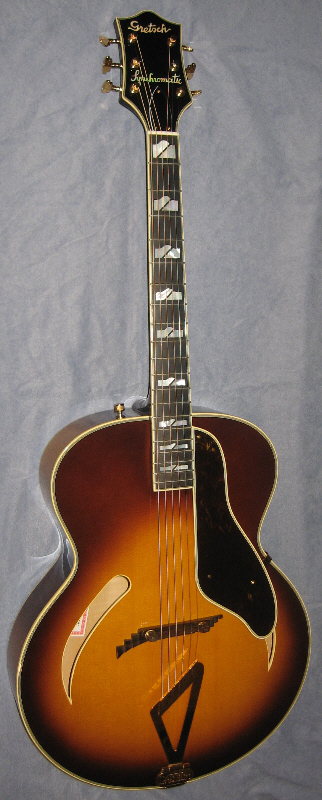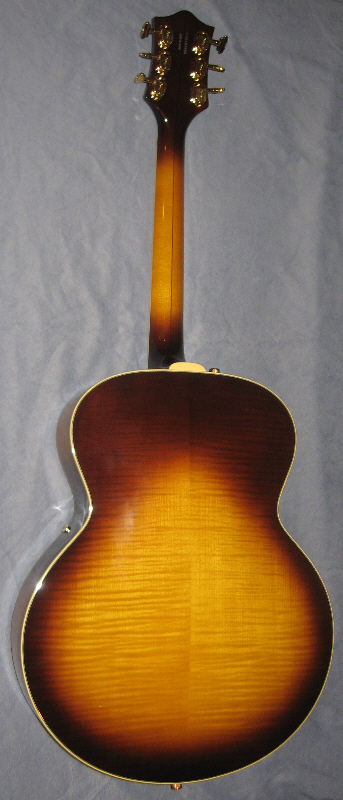
 |
|
#1
|
|||
|
|||
|
This may be an incorrect judgement, but I've noticed that a number of archtops seem to be very highly priced compared to flattops. Martin, for example, makes the CF1 and CF2 out of laminated maple, and yet the cost is quite a bit higher than some of their most famous and respected all-solid flattop models. Does more craftsmanship go into an archtop or what?
Last edited by ewalling; 09-17-2009 at 09:30 PM. |
|
#2
|
|||
|
|||
|
Significantly more. The top usually has to be carved.
|
|
#3
|
||||
|
||||
|
Lower cost arhtops are pressed into shape. High end archtops are carved out of a solid piece of wood, by HAND. It is a very labor intensive process and all of the tuning is done by graduating the thickness of the top. Its a similar process in how high end mandolins are carved only on a much larger scale. The backs are also carved, in a similar fashion out of hardwood, usually maple.
|
|
#4
|
|||
|
|||
|
Quote:
About the labor intensive: do you know if Asian builders have folks who have been trained with this kind of carving/tuning? Sounds incredibly touchy to me, yet it's fascinating to think some large computerized carving machine can't handle the shaping of the solid top; hurray that they can't ! I've never played a hand carved one, but sounds like it would be worth the try if I'm ever around one. |
|
#5
|
|||
|
|||
|
Quote:
The archtops I make take me about three times as long as a flattop. Carving plates is really labor intensive. Quote:
To the original question: the amount of labor involved indeed jacks the price. But I also think many builders are using the mystique of the archtop to jack the price up.
__________________
Paul Woolson |
|
#6
|
|||
|
|||
|
Im pretty sure the Eastman archtops are all hand carved in China. In fact they don't have a heck of a lot of automated tools in their factory from the videos I've seen.
__________________
Cranky, and living at the bottom of the barrel 
|
|
#7
|
|||
|
|||
|
It's very possible. I'll admit that I don't know a lot about Asian guitars. But the cost of labor in China could quite possibly make a carved archtop cheaper than a solid American made flattop.
__________________
Paul Woolson |
|
#8
|
|||
|
|||
|
Quote:
Eastman guitars are arguably the best values in the archtop world right now. That being said, I still want a Gibson, but Eastmans are top quality guitars. |
|
#9
|
||||
|
||||
|
Nothing much to add to the great information already given.
I might comment that the laminated plates used on a decent quality archtop commonly contribute more to good tone than the laminated tops and backs that you typically find on a flattop. In the flattop world, laminated tops and backs are an economical raw material but only mediocre as a "tone wood", especially when compared to solid wood flattop guitars. Of course one exception to this might be a "double top" plate. I guess you could consider a double top a kind of laminate and the ones I have heard sound wonderful. There are some high quality and sought-after laminated plates used on some electric archtops both for the sound characteristics as well as durability. A good, laminated plate is lightweight, creates a focussed tone and helps resist feedback. Very typically, laminated plates are used on an instrument intended to be amplified - i.e. an electric archtop. From what I have read and heard, a quality laminated plate while certainly cheaper to produce than a hand carved plate can be an expensive component of a quality archtop.
__________________
“Sometimes you have to play a long time to be able to play like yourself” — Miles Davis. Last edited by Livingston; 09-17-2009 at 11:42 PM. |
|
#10
|
|||
|
|||
|
Quote:
|
|
#11
|
|||
|
|||
|
yup... my cousin is an archtop luthier... the vast majority of luthiers that use laminate tops are producing VERY respectable instruments.
|
|
#12
|
||||
|
||||
|
Quote:
Another method is to use a "dupli-carver" type of machine. You place a known pattern on the table next to a glued up 2 piece solid top. A stylus will follow the pattern while a spindle or router will hog the bulk of the wood away from the top or back. This method will again get you close to the ball park. A CNC router or mill is the automated way to hog material from the two piece glued up top or back block. You would affix the block to the bed or table of the machine and then a computer will interface with the X, Y and Z axis' of the machine to shape the top or back arches. The CNC will likely get you inside the ball park but will not be able to do the final hand tuning to bring the maximum potential out of the plates. This is done by using finger planes, cabinet scrapers and sand paper. All three of these methods will yield a top or back plate that "looks" like an arch top. Many high production factories will simply remove the plates from the CNC, sand them to remove the tooling marks and its sent down the line to assembly. Hand builders will take the additional time to voice the plates and this is where the truly marvelous instruments can be brought to life... or not. |
|
#13
|
|||
|
|||
|
While hanging out in the shop of Bob Banedetto years ago, I was able to see his nice little top and back carving machine. It was off in a corner in its own small room about the size of a walk in closet and Bob would load a top or back plate into it and walk away.
The plate would be rough cut to within 1/16" of the final thickness. He would then fine tune the graduations to achieve his great tone. There is a lot of time and work invested in carving by hand from start to finish, but much of the higher price of archtop guitars is simply the result of the market being pushed to be tolerant of it. CNC machines cut the carved tops in all of the major archtop factories. There may be a small amount of carving done in the recurve area, but they are brought very close to their final graduations by the CNC machines. Regards, Kevin Gallagher |
|
#14
|
|||
|
|||
|
Weeel, you also have to carve the back too...
|
|
#15
|
|||
|
|||
|
Quote:
 And here's the finished product (my 2007 G400 that sounds incredibly good for its price point).  
__________________
GGJaguar's Guitarium and Ampeteria |